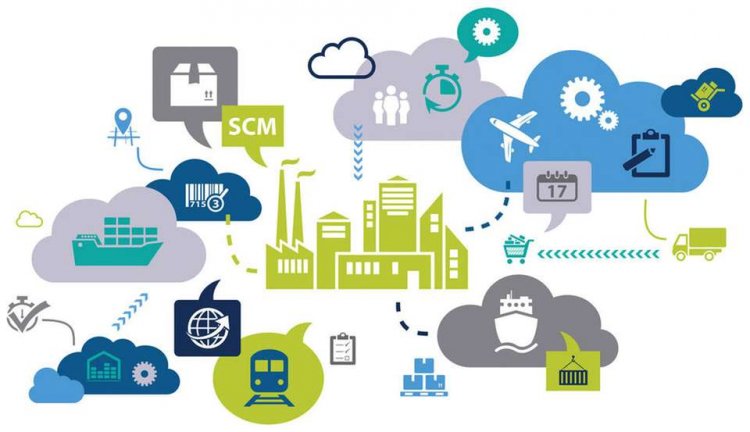Digitisation in Logistics

The increasing volume of global trades will put more pressure on the existing supply chain, with the logistics services sector estimated to reach a value of $16,445 billion by 2026 with a CAGR of 7.4%.
A confluence of forces- Amazon and Alibaba, electrification and sustainability, autonomy and robotics, among others are changing the logistics industry to become more resource efficient, faster, and responsive to customer needs.
Enabling technologies such as sensors, IoT, data analytics, and robotics are being deployed into specialized applications for the logistic sector. For example, vehicle telematics and self-driving technologies initially developed for passenger vehicles are now finding applications in the trucking sector to solve for the growing pain point of an increasing shortage of trucker drivers.
Peloton is developing a truck platooning system to reduce operating costs, while Locomotion is developing a complete self-driving technology for heavy duty trucks. Robotic innovations for warehouses and fulfilment centres also aim to solve the shortage of general labour with technologies ranging from automated forklifts to fulfilment robots.
Digitization of current operation processes is another area that is much needed for a transformation. Legacy operations that involve phone calls and faxes to create shipment orders are not only inefficient, but also lack visibility in tracking shipments’ progress.
Digitization also provides more granular real-time data (think available containers, rates, etc.), hence enabling the wave of new freight forwarding platform companies that are aiming to streamline the shipping process.
Online marketplaces that seek to monetize under-utilized assets (e.g. BlaBlaCar/Airbnb) is another trend enabled by digitization. Freight shipping marketplaces like Convoy, CargoX, and HuoCheBang allow shippers to connect with carriers with underutilized assets and provide a platform with more granularity on shipping service availability. Similar platforms also exist for last-mile delivery services such as Shadowfax and Roadie.
The Challenges
Data can be both a blessing and a curse when it comes to digitization!
On one hand, device-level data provides carriers with incredibly useful information across their entire operation, from planning and asset utilization to billing and invoicing.
On the other hand, data integration is a challenge in itself to derive the level of granularity across the supply chain. Companies like Turvo and Elementum are developing an end-to-end solution to consolidate various data sources into a value-add centralized platform.
Another inherent challenge in deploying digital solutions is the readiness of the supporting infrastructure. Particularly for technologies designed for warehouses, they would require wireless connectivity networks to support the sensors and other hardware that would be operating in the facilities.
For remote warehouses that were constructed for storage, this would likely require a complete retrofit, meaning additional costs and complexity in sales cycles if the warehouses are not owned by the same prospective customer.
A common thread among these threats is that most of the competition is deftly sparring with digital gloves.
Integrators are taking bigger chunks of market share away from traditional logistics organizations by offering more streamlined end-to-end services, and suppliers themselves are digitalizing their offerings and operations. Today’s traditional logistics concerns are hard-pressed to avoid the flurry of digital jabs coming from the competition, let alone squarely land punches of their own.
Adding to this challenging scenario is the fact that logistics trails behind the digital curve compared to most other industries sectors, like media, telco, banking, and retail. Here, where poor transparency serves to exacerbate an already fragmented industry, traditional logistics companies are plagued by underutilization of assets, old and inefficient manual processes, and outdated customer interfaces that serve to decrease response times.
The blueprint for transformation draws upon three key digital actions: develop new business models and offerings, digitalize core operations, and build a robust internal digital foundation. The success model for logistics organizations requires a number of inputs.
DEVELOP NEW BUSINESS MODELS AND OFFERINGS
New Digital Platforms: Building robust new platforms will help remove supply chain inefficiencies, solve problems associated with asset underutilization, improve demand-supply matching, and increase visibility and connectivity across systems.
Advanced Analytics: Putting powerful data-driven solutions to work can create new analytics tools that, in turn, can be sold to clients to help them optimize their own operations and efficiencies.
Control Tower: Providing solutions that boost operational visibility and connectivity between previously siloed systems allows stakeholders to more seamlessly connect to one another throughout the supply chain.
DIGITALIZE CORE OPERATIONS
Advanced Analytics: Similar to the benefits derived from the offering of new analytics tools, logistics organizations themselves can use advanced analytics to optimize operations in pricing, routing, and partial load shipment consolidation.
Customer Experience: Putting in place a digital front end not only provides customers with a convenient one-stop shop experience, it also improves internal operational visibility and automates previously manual processes.
Process Automation: Increasing the automation of core internal business processes can help ease labour-intensive logistics operations, like digitizing procurement with e-auctions.
Equipment Data: Digitally monitoring equipment health facilitates more effective predictive maintenance.
Next-Generation Solutions: Eyeing future operational improvements via robotics, artificial intelligence, and even augmented reality can help further elevate a logistical organization’s operational efficiencies in distribution, warehousing, and picking and packing.
BUILD A ROBUST INTERNAL DIGITAL FOUNDATION
Talent: Logistics enterprises must actively target and attract smart digital talent in order to compete, maintain efficiencies, grow into new areas, and deliver on the promise of value for customers.
Systems: Proffering the tenets and benefits of digital throughout the logistics organization helps rationalize investments in more flexible technology systems throughout the value chain.
Agility: Logistics concerns need to be nimble in solution development in order to maintain the pace of digital and maximize its benefits.
The logistics industry is being significantly transformed by digitalization. This is due to its many inefficiencies resulting from a large number of key players along the value chain and the intermittent exchange of information.
Start-ups, digitalized logistics companies and automotive manufacturers are trying to address these inefficiencies and make life easier for established logistics companies through digital solutions and business models. This privilege will be reserved for a few players only. Monopoly-like structures have become established because customers do not want to run around in different marketplaces.















































